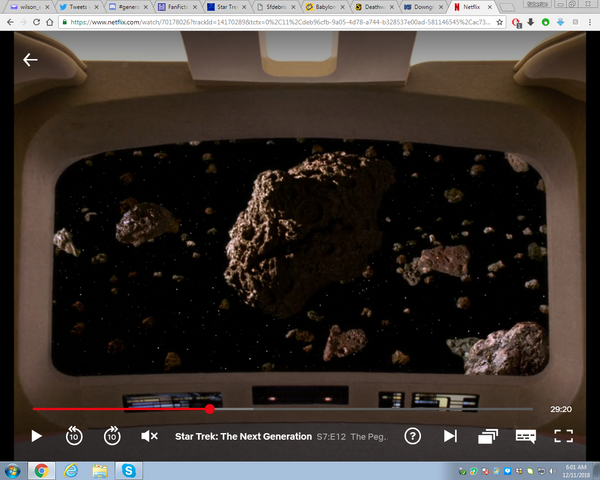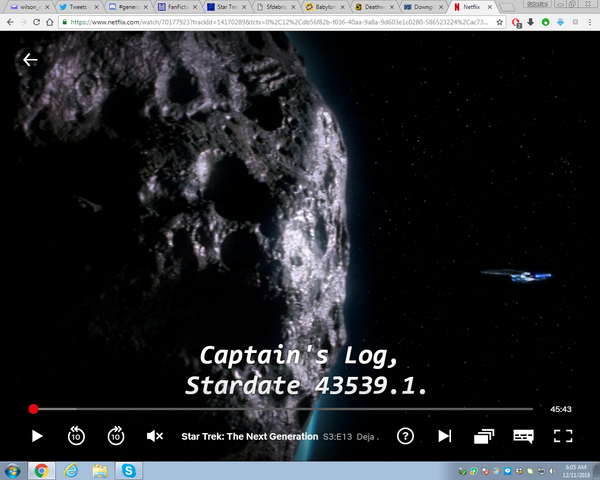Navigation
Install the app
How to install the app on iOS
Follow along with the video below to see how to install our site as a web app on your home screen.
Note: This feature may not be available in some browsers.
More options
-
This forum is strictly intended to be used by members of the VS Battles wiki. Please only register if you have an autoconfirmed account there, as otherwise your registration will be rejected. If you have already registered once, do not do so again, and contact Antvasima if you encounter any problems.
For instructions regarding the exact procedure to sign up to this forum, please click here. -
We need Patreon donations for this forum to have all of its running costs financially secured.
Community members who help us out will receive badges that give them several different benefits, including the removal of all advertisements in this forum, but donations from non-members are also extremely appreciated.
Please click here for further information, or here to directly visit our Patreon donations page. -
Please click here for information about a large petition to help children in need.
You are using an out of date browser. It may not display this or other websites correctly.
You should upgrade or use an alternative browser.
You should upgrade or use an alternative browser.
Downgrading the Enterprise-D?
- Thread starter Yukaphile
- Start date
- Status
- Not open for further replies.
- 384
- 119
No, you definitely didn't watch all of Star Trek: this ship has feats like moving neutron star fragments with it's own internal energy, destroying a sun by firing at it, stopping a planet-shattering FTL energy wave by shooting it. It's torpedoes are stated to be able to shatter an iron moon, and it's predecessor could both survive and dish out continent level attacks.Yukaphile said:I've watched all of Star Trek, and I really don't believe that ship is capable of blowing up a planet.
The series Star Trek: Enterprise is a prequel that takes place two whole centuries before the Enterprise-D was ever built. The technology has demonstrably improved since then.Yukaphile said:Hell, even in Enterprise, they couldn't blow up planets, though they could with the right tech.
- 384
- 119
You should use the "edit" function to add more to your posts instead of posting more than once.
Only if you want to ignore feats. Kirk's Enterprise could (barely) split a rocky moon with it's phasers. The Enterprise-D can blast an iron moon into pieces with torpedoes... and that's not the only example. Combined with the feats of it's predecessor, it's clear that there's a definite increase in technology between Star Trek and Star Trek: The Next Generation.Context! There is no way it could shatter a whole planet with a phaser blast. Even in DS9 said:Kirk's Enterprise was far stronger than the Enterprise-D.
- 821
- 47
- Thread starter
- #7
They are ships of comparable technology, Romulan warbirds and Cardassian cruisers.
This is the problem. The power levels of ships in the Star Trek universe seem to change depending on the plot. Look at Voyager, where they shoot photon torpedoes at a Trabe ship, and it doesn't seem very powerful at all, or how the Borg blasted at the city where Zefram Cochrane was and it logically should have blown up the city, yet it seems as strong as a modern mortar. Or the same thing in Star Trek V: The Final Frontier, where Kirk and co. are standing meters away from the blast, and are just fine. And speaking of Kirk, there's also the time his ship took on the Doomsday Machine. There's also the fact they flew to the center of the galaxy, while the Enterprise-D needed alien technology, and Voyager needed similar alien power upgrades. See what I mean about their power levels being inconsistent?
Geordi also complimented the Jenolan and said if it was still active it could probably "fly circles around the Enterprise at impulse speeds." And hell, the Excelsior and Miranda design hasn't changed that much in 70 or 80 years.
I just don't think the writers ever intended for the Enterprise to be able to destroy the Death Star in one hit. No. That's pure fanboy wank given what we've seen over the years.
This is the problem. The power levels of ships in the Star Trek universe seem to change depending on the plot. Look at Voyager, where they shoot photon torpedoes at a Trabe ship, and it doesn't seem very powerful at all, or how the Borg blasted at the city where Zefram Cochrane was and it logically should have blown up the city, yet it seems as strong as a modern mortar. Or the same thing in Star Trek V: The Final Frontier, where Kirk and co. are standing meters away from the blast, and are just fine. And speaking of Kirk, there's also the time his ship took on the Doomsday Machine. There's also the fact they flew to the center of the galaxy, while the Enterprise-D needed alien technology, and Voyager needed similar alien power upgrades. See what I mean about their power levels being inconsistent?
Geordi also complimented the Jenolan and said if it was still active it could probably "fly circles around the Enterprise at impulse speeds." And hell, the Excelsior and Miranda design hasn't changed that much in 70 or 80 years.
I just don't think the writers ever intended for the Enterprise to be able to destroy the Death Star in one hit. No. That's pure fanboy wank given what we've seen over the years.
- 384
- 119
Cardassian cruisers are nowhere near comparable technology. The Phoenix destroyed one with a single photon torpedo, and Galaxy Class starships esteem them as minor nuisances:Yukaphile said:They are ships of comparable technology, Romulan warbirds and Cardassian cruisers.
https://www.youtube.com/watch?v=UZk-SapVtpc https://youtu.be/d734afLFPds?t=214
This is the problem. The power levels of ships in the Star Trek universe seem to change depending on the plot. Look at Voyager (...)
Absolutely not. Star Trek: Voyager is known by the fans and the critics alike to be massively contradictory to Star Trek lore, and even if it wasn't, the Starship Enterprise-D is not the Starship Voyager. Using Voyager feats to support your position at all is disingenuous in the extreme.
http://web.archive.org/web/20151224...pmwiki/pmwiki.php/WallBangers/StarTrekVoyager <- Proof that what I just said is true: several folders of notable contradictions and plain nonsensical storytelling unique to Star Trek: Voyager.
how the Borg blasted at the city where Zefram Cochrane was and it logically should have blown up the city, yet it seems as strong as a modern mortar.
You took that feat (From Star Trek: First Contact) out of context: it was shown in the movie to be a diversion to distract the crew from the fact that the Borg were boarding the Enterprise-E - their real target. If the Borg destroyed Cochrane's ship before the Enterprise was temporally shielded, it would disappear from time and keep them from assimilating it's technology. Later, they confidently fired on Cochrane's ship with the intent to destroy it, and Data threw off their targeting: https://www.youtube.com/watch?v=JnN-SR_2ovA
Or the same thing in Star Trek V: The Final Frontier, where Kirk and co. are standing meters away from the blast, and are just fine.
It has been mentioned countless times in Star Trek that photon torpedoes have a yield that can be widely adjusted. In Star Trek: Enterprise it's stated that a torpedo could "put a 3 kilometer hole into an asteroid or knock the comm array off a shuttlepod". You can't have seen "all of Star Trek" and not know these things. If you HAVE seen Star Trek as much as you claim, you are cherry-picking and intentionally leaving out context.
And speaking of Kirk, there's also the time his ship took on the Doomsday Machine. There's also the fact they flew to the center of the galaxy, while the Enterprise-D needed alien technology, and Voyager needed similar alien power upgrades. See what I mean about their power levels being inconsistent?
No, since you are being disingenuous again. The most exact warp speed calculation in the original Star Trek is from the episode That Which Survives - in that episode, a mysterious force moved the Enterprise exactly 990.7 light years away from a planet where they had already sent a landing party. Enterprise returned in only 11.337 hours, for a speed of 766029.48 times lightspeed: fast enough to cross our galaxy in only 47.68 days. Well fast enough to reach the the galactic core, which they actually did twice. They also went past the edge of the galaxy thrice.
The reason the newer ships are slower is specifically because Starfleet found out that going too fast slowly tears apart space-time on repeat trips, putting inhabited planets at risk. So, the Federation established a universal Warp Speed limit on all starships except in the case of extreme emergency. That's from the episode Force of Nature in Star Trek: The Next Generation.
Geordi also complimented the Jenolan and said if it was still active it could probably "fly circles around the Enterprise at impulse speeds."
Of course it could: the Jenolan is a small personal use ship and the Enterprise-D is a capital ship the size of a city. I'd call foul if it wasn't able to casually run circles around Enterprise at impulse the way any small ship in Star wars runs circles around Star Destroyers.
And hell, the Excelsior and Miranda design hasn't changed that much in 70 or 80 years.
Actually, they have changed an awful lot: https://www.youtube.com/watch?v=WCpYqWAIwFA <- First model Miranda Class, uses pulse phasers. https://youtu.be/89WcIwjlQxA?t=63 <- New model Miranda Class. Faster, more maneuverable, uses totally different phasers, still no match for Dominion weapons because they are so old.
I just don't think the writers ever intended for the Enterprise to be able to destroy the Death Star in one hit. No. That's pure fanboy wank given what we've seen over the years.
Ah: now we get to the real issue. Well, you're simply wrong. Kirk's Enterprise was (barely) able to cut an asteroid "the size and mass of Earth's moon" in two in the original Star Trek, using their full phaser power. The Earth's moon is 2,159 miles in diameter... the Death's Star was only 99.4 miles (160 kilometers) in diameter, and mostly hollow. Simple put, Kirk's Enterprise could easily destroy the Death Star by shooting it: the beam would burrow through to the Khyber crystal reactor, and the Death Star would explode. Star Trek was always objectively this powerful across the board, from hand weapons that disintegrate people into atoms, to starships that can casually lay waste to entire worlds. Ever since the show's first pilot episode in 1965, when Lieutenant José Tyler stated that the Enterprise could "blast half a continent" as a show of force, that has never changed. Altering this wiki to ignore Star Trek's established canon for the sake of a displeased Star Wars fan sets a very bad precedent going forward.
- 821
- 47
- Thread starter
- #9
If the Enterprise-D had planetary-blasting power, then when they went after the asteroid in "The Pegasus" that was only like five kilometers in size, why did Riker insist it would take their whole torpedo payload to destroy it? That's like 200 torpedoes? Rather than a single volley? That's what I mean when I say their power changes and it's inconsistent. And I could give many other examples too.
- 384
- 119
https://www.youtube.com/watch?v=dAwAThWr9Tg - Riker DID NOT say that it would take their whole torpedo payload to destroy it. You are also flatly wrong about the size: the asteroid was so big that it would take six hours to find a ship that had crashed inside it. It also had it's own gravity and was stated to be able to fall in on itself and crush the Enterprise. That makes it the size of a moon.Yukaphile said:If the Enterprise-D had planetary-blasting power, then when they went after the asteroid in "The Pegasus" that was only like five kilometers in size, why did Riker insist it would take their whole torpedo payload to destroy it? That's like 200 torpedoes? Rather than a single volley? That's what I mean when I say their power changes and it's inconsistent.
But certainly, you ask, if they could blow up a moon, why not blow it up in one shot?
https://youtu.be/DHzz6Ztcmzc?t=223 <- Because they were inside the asteroid, and a full yield photon torpedo at close range would blow up the Enterprise along with it. A careful detonation of a lot of smaller yield warheads would crumble the asteroid without being suicidal.
And I could give many other examples too.
I'm certain they'd be just as disingenuous as everything else you've said so far. I do my research, so banking on my ignorance is not a safe bet.
- 821
- 47
- Thread starter
- #11
Point being, they said it would take more than one shot. Also, you're misconstruing things. Riker suggested they blow up the asteroid before entering it to impede the Romulans from getting their hands on a Federation starship. It wouldn't be an issue if they could just fire one torpedo and take it out or shoot one phaser blast and take it out. The only reason that they didn't unleash their whole barrage is the admiral in charge of the mission overruled him because he desperately wanted to seize the phase cloak on board the old vessel. This is my whole point, that you seem to have a hard time wrapping your head around; their power levels change depending on plot, and they're inconsistent as hell. Like when a Klingon bird of prey made a star go nova, and yet in other instances, you need protomatter and trilithium to accomplish such a feat, exotic chemicals, and not actually weapons. With that logic, do we bump a Klingon bird of prey up to 4-C now? Higher than the Enterprise-D? Also something to note is Voyager's episode "Think Tank" where we see them meddle with a planet loaded with dilithium and other exotic minerals, and it blows up. Maybe it's not actual planet-busting, but chain-reaction effects? Like, say, bombarding planets with the frequency-based NDF chain-reaction weapons phasers tend to be? And other particle weapons? You seriously have not watched Trek if you believe the Enterprise could destroy the Death Star in one shot. Kirk's Enterprise, sure, it took on the Doomsday Machine, and traveled to the center of the galaxy (tech superior to a century later). But the Enterprise-D? No. Or that given best showing, a Klingon bird of prey could do it since it took out a star. But do we go by best showings? Because if we do, the Death Star's superlaser has been calced to be much higher than the baseline for planet-busting. It might even hit the star ranges. Oh, and you're overestimating the size of that asteroid to boot. With an absolute highball, it would still be maybe 20 km. The size of a small city. Since we see the Enterprise next to something called the "Argus Array," and it is similarly tiny. It was confirmed within the episode there was "ionizing radiation" in the asteroid belt they and the Romulans were searching that would slow down their scanners, hence why it would take six hours to pinpoint an exact location.
- 821
- 47
- Thread starter
- #12
We don't rate Post-Crisis Superman by his best feats, we sort of gauge what's in the middle. Why rate the Enterprise-D so high when on average, their best attacks are mountain to continental level, to be generous? Not to mention the official tech guides that put their weapons at very low levels of power. Like DC and Marvel, Trek also had a ton of different writers. THERE'S THE PROBLEM. And why you need to find a convenient center to all this. Finally, we use the guides to back up Cell's claim. And on screen showings mostly conform to what the tech guides lay out, with a few outliers, so I don't get why the Enterprise-D is ranked so got-danged high given the logic of this site.
- 22,461
- 18,681
I've been watching Star Trek recently.
In the episode The Survivors, they actually make reference to the first Hudsnock Ship they fought packing enough firepower to "pulverize a planet", yet they were still confident in fighting it and actually curbstomped it, albiet the ship was "toying" with them.
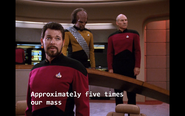
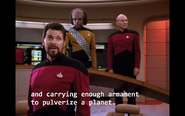
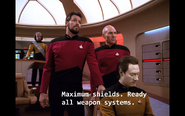
In New Ground, a new method for warp travel was created. However it went wrong and would have destroyed most of a planet it hit. But they still could stop it and withstand it at 33% shield strength. Albiet, it was still increasing, but the energy was measured as 96x when they first came into contact rather than the 200 it'd be when hitting the planet.
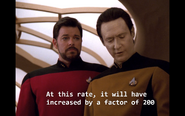
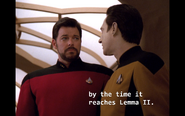
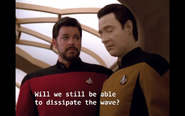
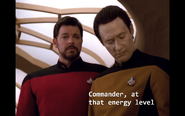
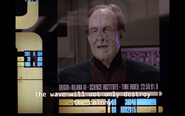
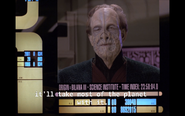
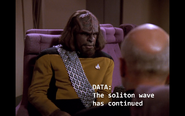
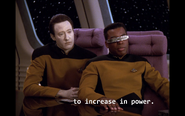
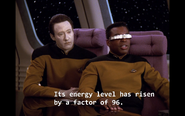
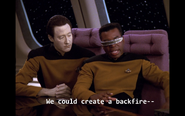
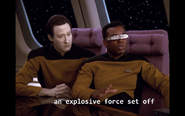
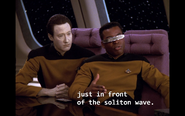
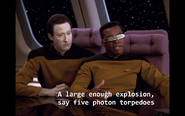
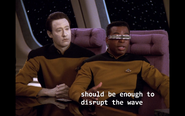
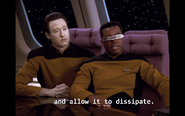

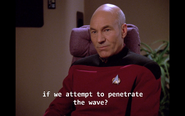
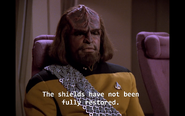
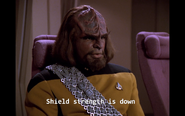
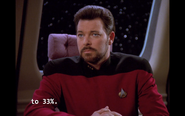
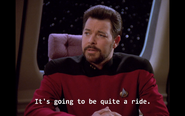
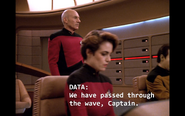
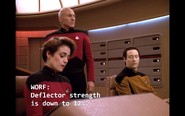
In Deja Q, the Tractor Beam could move an astroidal-moon at 94 m/s (maybe 96) and would have reduced it to "thousands" of fragments, had they chosen to destroy it.
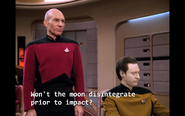
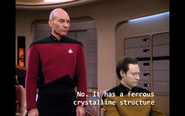
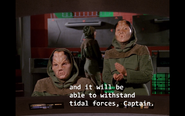
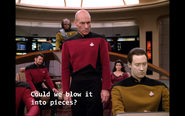
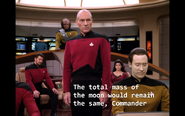
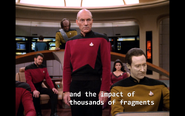
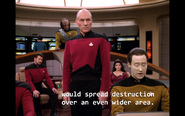
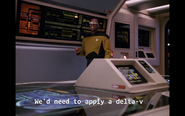
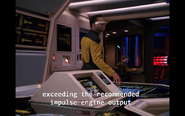
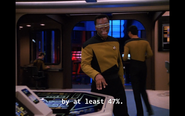
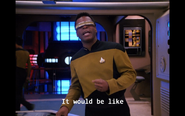
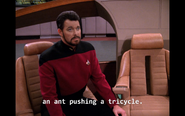
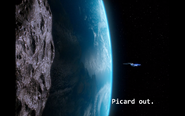
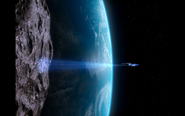
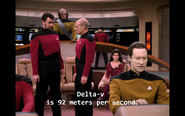
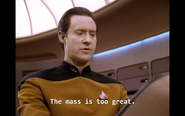
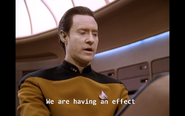
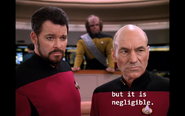
In another episode, a war between a planet completely reduced it to rubble. And this was an old war with obsolete tech.
It's stated and shown that La Forge has made a lot of upgrades to the ship. Some of these can be seen in The Best of Both Worlds, and it's actually referenced later that they did increase their firepower by Leah Brahms in Galaxy's Child.
While trying to save a planet, they launched a modified proton torpedo, causing it to rise in temperature and mass. Unfortunately, it was destroyed.
Photon Torpedoes have been seen using variable yields, including 4 and 16.
You go on about how the Borg should have destroyed the city, and yet it's shown in that they literally scoop cities out of planets, leaving rips in the surface.
The actual reason they don't do this all the time isn't just because of inconsistency, it's also that they cannot maintain this level of power for long in most circumstances.
Essentially, it still has some Planet level or Moon level feats. I do think Large Planet level is an outlier though. Here's also some threads that show other feats.
In the episode The Survivors, they actually make reference to the first Hudsnock Ship they fought packing enough firepower to "pulverize a planet", yet they were still confident in fighting it and actually curbstomped it, albiet the ship was "toying" with them.



In New Ground, a new method for warp travel was created. However it went wrong and would have destroyed most of a planet it hit. But they still could stop it and withstand it at 33% shield strength. Albiet, it was still increasing, but the energy was measured as 96x when they first came into contact rather than the 200 it'd be when hitting the planet.























In Deja Q, the Tractor Beam could move an astroidal-moon at 94 m/s (maybe 96) and would have reduced it to "thousands" of fragments, had they chosen to destroy it.


















In another episode, a war between a planet completely reduced it to rubble. And this was an old war with obsolete tech.
It's stated and shown that La Forge has made a lot of upgrades to the ship. Some of these can be seen in The Best of Both Worlds, and it's actually referenced later that they did increase their firepower by Leah Brahms in Galaxy's Child.
While trying to save a planet, they launched a modified proton torpedo, causing it to rise in temperature and mass. Unfortunately, it was destroyed.
Photon Torpedoes have been seen using variable yields, including 4 and 16.
You go on about how the Borg should have destroyed the city, and yet it's shown in that they literally scoop cities out of planets, leaving rips in the surface.
The actual reason they don't do this all the time isn't just because of inconsistency, it's also that they cannot maintain this level of power for long in most circumstances.
Essentially, it still has some Planet level or Moon level feats. I do think Large Planet level is an outlier though. Here's also some threads that show other feats.
- 384
- 119
I already explained that the Enterprise was literally inside the asteroid. Because of that, a single full yield torpedo blast would destroy the Enterprise AND the asteroid. Like shooting a tank killing missile while still inside the tank.Yukaphile said:Point being, they said it would take more than one shot. Also, you're misconstruing things. Riker suggested they blow up the asteroid before entering it to impede the Romulans from getting their hands on a Federation starship. It wouldn't be an issue if they could just fire one torpedo and take it out or shoot one phaser blast and take it out. The only reason that they didn't unleash their whole barrage is the admiral in charge of the mission overruled him because he desperately wanted to seize the phase cloak on board the old vessel.
That's not an example of a power level change: that's you assuming that there's only one way to blow up a star. The trilithium torpedo built by Tolian Soran was made with contemporary Romulan tech. The Enterprise also destroyed a sun with torpedoes: ergo, Star Trek has various ways to blow up a sun - all by making the sun explode itself, so the Star Busting feats have no effect on the AP.Yukaphile said:This is my whole point, that you seem to have a hard time wrapping your head around; their power levels change depending on plot, and they're inconsistent as hell. Like when a Klingon bird of prey made a star go nova, and yet in other instances, you need protomatter and trilithium to accomplish such a feat, exotic chemicals, and not actually weapons. With that logic, do we bump a Klingon bird of prey up to 4-C now? Higher than the Enterprise-D? Higher than the Enterprise-D? Also something to note is Voyager's episode "Think Tank" where we see them meddle with a planet loaded with dilithium and other exotic minerals, and it blows up.
Starship Weapon EffectsYukaphile said:Maybe it's not actual planet-busting, but chain-reaction effects? Like, say, bombarding planets with the frequency-based NDF chain-reaction weapons phasers tend to be?
https://media.giphy.com/media/13D1aaaTiI1tXa/giphy.gif <- Enterprise-D firing on an unprotected Borg Cube. Notice the explosions and shallow craters each shot generates.
https://78.media.tumblr.com/05354a88964d7ba9e2ce562e4dffe21a/tumblr_n389rvMXTG1rzu2xzo4_r1_400.gif <- In the Mutara Nebula, the Enterprise fires a photon torpedo at the starship Reliant, followed by a phaser strike. Purely physical weapon effects follow both shots, including fragmentation.
https://78.media.tumblr.com/32df0bb85d73f56eed5bb958317898f3/tumblr_n389rvMXTG1rzu2xzo5_r1_400.gif <- Another torpedo strike from the same battle.
https://78.media.tumblr.com/76eff550684435f36067eb6c5075a4a4/tumblr_n389rvMXTG1rzu2xzo6_r1_400.gif <- The condition of the Reliant after those impacts.
https://i.pinimg.com/originals/f8/c1/42/f8c1422fbd21cac4259d073d16b9a896.gif <- A phase canon (predecessor to phaser) blowing a ship in half.
https://i.pinimg.com/originals/e3/fe/29/e3fe298e96f4c231ddba3db531266709.gif <- A Klingon fleet under phaser and torpedo fire: the ship on the left gets blown to pieces.
https://1.bp.blogspot.com/-Lwnfly1Q...Ev_yvCY1NAsCxDQCLcB/s1600/Star_Trek_6_46b.gif <- Klingon Bird of Prey destroyed by torpedoes: same as before, purely physical weapon effects follow.
http://1.bp.blogspot.com/-K4yUHn5rR...iE/s320/tumblr_lom30s1ZD51qj6sk2o1_r1_250.gif <- Voyager fores torpedoes at the Equinox: same as before, purely physical weapon effects follow.
https://78.media.tumblr.com/81122b192ad1e6a87c33b23e7c74a375/tumblr_mpedcg4cpE1rzu2xzo1_r1_400.gif <- During the Dominion Wars, two ships get blown apart: same as above. In fact, the ships are physically tossed aside by the impacts.
Hand Weapon Effects
http://images4.fanpop.com/image/photos/18300000/Odo-Gifs-odo-18331000-300-225.gif <- That's Odo literally exploding from hand phaser fire.
https://i.imgur.com/lCpyk8t.gif <- Lieutenant Remmick also explodes from phaser fire, and quite graphically.
http://tos.trekcore.com/hd/albums/1x00hd/thecagehd0651.jpg <- From TOS, a hand phaser fired against a stone barricade.
http://tos.trekcore.com/hd/albums/1x00hd/thecagehd1162.jpg <- Same episode: a much larger phaser fired against a seemingly unbreakable door.
https://i2.wp.com/www.tor.com/wp-content/uploads/2015/04/st-trap17.jpg?resize=740,555&type=vertical <- From TOS, a hand phaser shooting a stone pillar.
The explosions and fragmentation are coming from Direct Energy Transfer, not some esoteric nadion particle technobabble. I can provide more references if necessary, but I don't think it should be necessary after this. I already debated this supposition on the Star Trek Revisions thread a while ago. Phasers are directed energy weapons. The disruptor effect is one of their many settings, not the basic operation of the weapon.
Yes, as ByAsura's post above proves. The Enterprise (either Kirk's or Picard's) would destroy the Death Star quite casually.Yukaphile said:And other particle weapons? You seriously have not watched Trek if you believe the Enterprise could destroy the Death Star in one shot. Kirk's Enterprise, sure, it took on the Doomsday Machine, and traveled to the center of the galaxy (tech superior to a century later). But the Enterprise-D? No.
This thread is not about the Enterprise's firepower compared against the Death Star's. It's about the Enterprise, only, and there's no room for this sort of fandom rivalry on a wiki like this: it obscures the facts at hand in favor of a desired outcome.Yukaphile said:Or that given best showing, a Klingon bird of prey could do it since it took out a star. But do we go by best showings? Because if we do, the Death Star's superlaser has been calced to be much higher than the baseline for planet-busting. It might even hit the star ranges.
DATA: "This asteroid contains several deep chasms large enough for a starship to enter. It is possible the Pegasus drifted into the asteroid's gravitational field and was pulled down into one of the fissures."Yukaphile said:Oh, and you're overestimating the size of that asteroid to boot. With an absolute highball, it would still be maybe 20 km. The size of a small city. Since we see the Enterprise next to something called the "Argus Array," and it is similarly tiny. It was confirmed within the episode there was "ionizing radiation" in the asteroid belt they and the Romulans were searching that would slow down their scanners, hence why it would take six hours to pinpoint an exact location.
Also:
DATA: "I would recommend against it, sir. There may be gravimetric or magnetic fluctuations inside the asteroid which would overpower the engines of a shuttlecraft."
It has gravity. To have gravity like that, it's not a mere 20 kilometers in diameter unless it's made of solid neutronium. That, and if it was that small, radiation or not they'd find the Pegasus within minutes.
Most of the guides you refer to (Such as the oft referenced Star Trek The Next Generation Technical Manual) are not canon by way of contradiction. Star Trek's average feats actually far, far exceed your claims, as this thread is handily demonstrating.Yukaphile said:We don't rate Post-Crisis Superman by his best feats, we sort of gauge what's in the middle. Why rate the Enterprise-D so high when on average, their best attacks are mountain to continental level, to be generous? Not to mention the official tech guides that put their weapons at very low levels of power. (...) I don't get why the Enterprise-D is ranked so got-danged high given the logic of this site.
- 384
- 119
The reference for the 5-A feat is the episode The Masterpiece Society (transcript here). Quoting from that transcript:ByAsura said:(...) Essentially, it still has some Planet level or Moon level feats. I do think Large Planet level is an outlier though. (...)
Code:
LAFORGE: "Transferring warp power to tractor beam generator." HANNAH: "Graviton generators operating normally. Surge pulse now synchronised. Emitters radiating at three hundred twenty percent over standard." LAFORGE: "Bridge, we need more power." (...) HANNAH: "Four hundred percent over standard." LAFORGE: "Okay. Now we're getting there." HANNAH: "The fragment's moved point four degrees off its previous heading. Point six five. It's working."You already posted screenshots from the episode Deja Q, (transcript here) where Commander Riker casually brings up the idea of blowing a moon with a "ferrous crystalline structure" (iron crystals) into pieces. That's 5-C, and it doesn't contradict the ability to generate energy enough to reach 5-A with the output of the main engines. Being that lesser ships can and have induced stars to go nova with similar systems, I'm inclined to believe the page is currently accurate.
- 821
- 47
- Thread starter
- #17
In "The Survivors," Worf was also showing concern over being buffeted with "400 gigawatts of particle energy." And I've seen pictures of that moon. It's, again, maybe 20 kilometers at best if you wanna be generous. It's certainly not the size of Mars' moons. That would place it more within the continental or city range rather than moon range, if we're thinking the size of our moon. What makes the composition of the moon unique? And moving a neutron star fragment? That's what they can do this week. Pure plot convenience. That's what you get from a team of different wrtiters. Hell, the "400 gigawatts" I mentioned? Contradicts other claims of massive watts of energy over the years. Like when Ensign Kim grabbed Seven because she was about to grab a conduit that had "five million gigawatts running through it." When the Enterprise-D appeared as if it could have been hurt by "400 gigawatts of particle energy." Just go to the wattage page on Memory Alpha and you'll see tons of contradictions. It's like trying to gauge Superman's power. It's never consistent. Again, that's not surprising from a team of different writers. Also, regarding the tech guides, I would say the statements contradict the tech guides. Actual showings do not. Like, again, when Voyager attacked the Trabe ship, and the surrounding city was not even leveled. Or, how the Borg, the freaking Borg's weapons couldn't even blow up a small settlement where Cochrane was. Low megatons makes sense. Claiming they're in the planetary ranges when they have numerous writers... why not rate Post-Crisis Superman at 3-A then? He has the feats. Why ignore the tech guides and accept them for Cell when all we have is his statement?
- 22,461
- 18,681
That's probably authors not knowing math. He wasn't actually concerned because the shields took absolutley no damage. Also, the ship was holding back the whole time, making that invalid.
I've also seen projections of the moon on a monitor and the like. It's roughtly comparable to Earth's moon. Making it that size was probably budgetary constraints and making it actually visible. It could also be just a small curved portion, it's probably not flat.
Not going to go over the rest since that's Idazmi's area. But when we rate things it tends to be the most consistent or highest possible consistent rating; compare Superma and Meliodas for reference. Also, Idazmi explained it (they were holding back) and the Borg literally scoop Cities and Federation Settlements out of Planets, leaving massive rips on the surface. I don't know how you could forget The Borg doing that if you're so interested in Star Trek: The Next Generation.
I've also seen projections of the moon on a monitor and the like. It's roughtly comparable to Earth's moon. Making it that size was probably budgetary constraints and making it actually visible. It could also be just a small curved portion, it's probably not flat.
Not going to go over the rest since that's Idazmi's area. But when we rate things it tends to be the most consistent or highest possible consistent rating; compare Superma and Meliodas for reference. Also, Idazmi explained it (they were holding back) and the Borg literally scoop Cities and Federation Settlements out of Planets, leaving massive rips on the surface. I don't know how you could forget The Borg doing that if you're so interested in Star Trek: The Next Generation.
- 821
- 47
- Thread starter
- #19
Also in regards to "The Survivors," it was stated it took them a few days to arrive. You can completely devastate the surface of a planet in that time. But they sure as heck didn't blast it down to its core like it was claimed over on DS9. And it takes more than "400 gigawatts" to destroy a planet completely. "Pulverize" doesn't mean "obliterate completely" either.
- 22,461
- 18,681
Not what I was talking about, also the planetary bombardment probably didn't take that much time given the way Kevin and his projection wife described it. But this should be disregarded due to there being an unknown amount of ships.
Again, authors don't focus on math and it doesn't matter if the planet was obliterated completely, it's still Planet level. Plus pulverize is often used synonymously with "destroy" in general, it isn't always meant as "reduced to dust" or "fine particles".
Again, authors don't focus on math and it doesn't matter if the planet was obliterated completely, it's still Planet level. Plus pulverize is often used synonymously with "destroy" in general, it isn't always meant as "reduced to dust" or "fine particles".
- 821
- 47
- Thread starter
- #21
Then why are Star Destroyers ranked as less than the Death Star? The way you've got this set up, the Enterprise could stomp a single Star Destroyer, or a whole fleet of them, which is just dead wrong, and even take on the Death Star. Need I remind you, in Legends, a Star Destroyer on its own could destroy the surface of an entire inhabited planet in a day? That's 6-A or possibly 5-C in its own right. Not to mention the Eclipse.
- 22,461
- 18,681
Are you talking to me or Idazmi? Either way this point has nothing to do with the entire thread. The two universes also have an enormously different scale of power, so you shouldn't even be comparing them. It just seems like you're grasping at straws here, and it's not like ships in Star Trek haven't bombarded a planet's surface to slag.
- 821
- 47
- Thread starter
- #23
I feel as if this is misinformation being presented. As it is presented on the profiles, one would get the impression the Enterprise has the same power as the Death Star and could destroy the entire Imperial fleet and only be taken out by their superweapons, which is just flat-out wrong. Look at the kind of debates they had on StarDestroyer.net and you'll get a clear idea what I'm talking about. Why choose "moving a neutron star fragment" as the way to gauge their tier? It's like going with one of Post-Crisis Superman's universal feats and putting him at 3-A, or scaling him to someone he's fought who's 3-A. Or higher. I consider these outliers or more along the lines of hax or space-time feats that don't equate to actual destructive power, which is actually deceptively lower given the NDF chain reaction nature of their weapons. And need I remind you there are tech guides for Star Wars ships too, but they aren't scaled to anywhere near where the Enterprise is. Look at this.
-ACCLAMATOR TROOP TRANSPORT-
REACTOR: 200,000,000,000,000 gigawatts
SHIELDS: 70,000,000,000,000 gigawatts
LIGHT GUNS: 71.7 megatons
HEAVY GUNS: 2,400 gigatons
-IMPERIAL STAR DESTROYER I-
REACTOR: 7,730,000,000,000,000 gigawatts
SHIELDS: 2,705,500,000,000,000 gigawatts
LIGHT GUNS: 2.77 gigatons
HEAVY GUNS: 92,760 gigatons
-IMPERIAL STAR DESTROYER II-
REACTOR: 9,280,000,000,000,000 gigawatts
SHIELDS: 3,248,000,000,000,000 gigawatts
LIGHT GUNS: 3.33 gigatons
HEAVY GUNS: 111,360 gigatons
-SUPER STAR DESTROYER EXECUTOR-
REACTOR: 773,000,000,000,000,000 gigawatts
SHIELDS: 380,000,000,000,000,000 gigawatts
LIGHT GUNS: 277.13 gigatons
HEAVY GUNS: 9,276,000 gigatons
This is from Legends, based on official guides. So why are they ranked so low and the Enterprise ranked so high? It seems incredibly unfair, tbh.
-ACCLAMATOR TROOP TRANSPORT-
REACTOR: 200,000,000,000,000 gigawatts
SHIELDS: 70,000,000,000,000 gigawatts
LIGHT GUNS: 71.7 megatons
HEAVY GUNS: 2,400 gigatons
-IMPERIAL STAR DESTROYER I-
REACTOR: 7,730,000,000,000,000 gigawatts
SHIELDS: 2,705,500,000,000,000 gigawatts
LIGHT GUNS: 2.77 gigatons
HEAVY GUNS: 92,760 gigatons
-IMPERIAL STAR DESTROYER II-
REACTOR: 9,280,000,000,000,000 gigawatts
SHIELDS: 3,248,000,000,000,000 gigawatts
LIGHT GUNS: 3.33 gigatons
HEAVY GUNS: 111,360 gigatons
-SUPER STAR DESTROYER EXECUTOR-
REACTOR: 773,000,000,000,000,000 gigawatts
SHIELDS: 380,000,000,000,000,000 gigawatts
LIGHT GUNS: 277.13 gigatons
HEAVY GUNS: 9,276,000 gigatons
This is from Legends, based on official guides. So why are they ranked so low and the Enterprise ranked so high? It seems incredibly unfair, tbh.
- 22,461
- 18,681
It's not just moving a Neutron Star Fragment, there's a ton of other planet level feats (including stuff that we have not discussed), that aren't hax, which makes it consistent and not an outlier. Again, you are comparing two Universes with a different scale of power. You're grasping at straws and keep repeating arguments that have been debunked, like how the Star Trek guides are massively contradictory (unlike these Star Wars guides, since 773,000,000,000,000,000 gigawatts is Multi-Continent level) and how they're not all chain reactions.
- 821
- 47
- Thread starter
- #25
Sure. Species 8472 blowing up a planet. I know. But then since Voyager's shields could withstand that, even slightly, and then get taken out by the weakest things at times, don't you spot that as an inconsistency? You miss the point I'm trying to make, that Trek, like DC and Marvel, has had a team of writers working on it. Why take the credence of one over the other? There's Brannon Braga, Ron Moore, Michael Piller, Rick Berman, Maurice Hurley, and so on. I'm not denying planet-level feats, but I'm also trying to tell you there's extremely poor showings as well, in an equal amount, that you're not listening to me about. And to date, we have NEVER seen the Enterprise blow up a planet in one hit like the Death Star. Maybe it should be bumped down to 5-C. I wasn't talking about putting it at Tier 6. But planet level is pure wank. I've seen the soliton wave episode, and that had to do with frequencies more than actual destructive power. In fact, it always seems to be frequencies. They never physically blow up a planet in one shot. NEVER. Yet people act as if they do. Look at Species 8472 even. It took nine ships to pull off that feat. So don't you think one ship doing it all on its own is a bit of an outlier, given Species 8472 >>>>> Borg >>>>>> Starfleet all day? Hell, even Riker's line that they could "blow that moon" into pieces... well, that's problematic given the moon is not that big, and that it wouldn't blow it up in one hit, which if they could, meant the planet wouldn't be in danger. If they had planet-busting power, as if they had the power to blow up planets like Earth in one shot, then Bre'el IV would have never been in danger.
- 22,461
- 18,681
Idmazi already explained that: Voyager isn't the Enterprise and the series massively contradicts the lore on multiple occasions. Also, they're not the only ones, Original Series ships have bombarded Planets, which are weaker. Yes, I've heard your point here a ton, but that still doesn't counter the fact that Star Trek has so so many Planet level feats on a very consistent basis. Higher feats aren't used for PC Superman because they are ususally are A) Unquantifiable, B) Actually are inconsistent in terms of power scaling and consistency, C) Are done by writers who consistently break established lore and feats. These, on the other hand, are quantifiable, done consistently, work with power scaling, and work with the mass of Planet level weapons and characters.
That wasn't due to frequencies, that was the previous method, which they didn't use due to the variable nature of the wave. However, it was done by 5 torpedoes, which makes it a Small Planet level feat. Inverse projections, statements, etc, trump one showing of a small moon, which may only be a tiny portion. It's not problematic. Plus, it was strong enough to not burn up in the atmosphere and can withstand tidal forces.
I think bumping them down to Planet level or Small Planet level could be ok though. These seem to be consistent and actually work with the previous Continent level and Multi-Continent level feats done by weaker ships. Large Planet level itself doesn't really have anything behind it.
On the thing about not just blowing up a planet, they wouldn't do that. It's heavily out of character for Picard or Kirk to just wipe out a planet to make things easy, and Star Fleet would probably blow them up or send them to jail just for trying. A lot of characters in fiction don't just destroy a planet because they can. There's also Area of Effect.
That wasn't due to frequencies, that was the previous method, which they didn't use due to the variable nature of the wave. However, it was done by 5 torpedoes, which makes it a Small Planet level feat. Inverse projections, statements, etc, trump one showing of a small moon, which may only be a tiny portion. It's not problematic. Plus, it was strong enough to not burn up in the atmosphere and can withstand tidal forces.
I think bumping them down to Planet level or Small Planet level could be ok though. These seem to be consistent and actually work with the previous Continent level and Multi-Continent level feats done by weaker ships. Large Planet level itself doesn't really have anything behind it.
On the thing about not just blowing up a planet, they wouldn't do that. It's heavily out of character for Picard or Kirk to just wipe out a planet to make things easy, and Star Fleet would probably blow them up or send them to jail just for trying. A lot of characters in fiction don't just destroy a planet because they can. There's also Area of Effect.
- 384
- 119
He is grasping at straws. As I alluded to earlier, he's not interested in accurate scaling: he wants to downplay Star Trek feats because he's uncomfortable with Star Trek having higher feats than Star Wars. The problem is, Star Trek simply has higher feats, and a lot of them.ByAsura said:Are you talking to me or Idazmi? Either way this point has nothing to do with the entire thread. The two universes also have an enormously different scale of power, so you shouldn't even be comparing them. It just seems like you're grasping at straws here, and it's not like ships in Star Trek haven't bombarded a planet's surface to slag.
I think bumping them down to Planet level or Small Planet level could be ok though. These seem to be consistent and actually work with the previous Continent level and Multi-Continent level feats done by weaker ships. Large Planet level itself doesn't really have anything behind it.
I would agree with that if it weren't for the stellar fragment feat. http://web.archive.org/web/20160505021923im_/http://i.imgur.com/8yg6bkx.jpg
A Neutron star fragment as big as what we see in that episode would easily be more than a thousand times heavier than Earth. That makes moving it a 5-A feat.
- 384
- 119
Yet, there's a lot of clear planet level feats in the series right after TOS. Even Star Trek's most primitive tech end compares favorably to Star Wars' largest canonical warships:Yukaphile said:(...) I'm not denying planet-level feats, but I'm also trying to tell you there's extremely poor showings as well, in an equal amount, that you're not listening to me about. And to date, we have NEVER seen the Enterprise blow up a planet in one hit like the Death Star. Maybe it should be bumped down to 5-C. I wasn't talking about putting it at Tier 6. But planet level is pure wank. (...)
https://www.youtube.com/watch?v=0OzFITsYVP4&t=4s <- This is the Mandator IV Siege Dreadnought from Star Wars: The Last Jedi firing on a Resistance base with it's massively oversized cannons.
https://www.youtube.com/watch?v=uI-3bmLNNkY < - The NX-class Enterprise from a century before Kirk test fires it's standard phase cannons at a deserted asteroid.
The feats are comparable in scale. Yes, the feat on Star Trek's end was an overload, and the plasma recoil took out part of the power grid. But look here:
https://youtu.be/FnWE4SZnjIg?t=80 <- The captain explicitly asks to overload the weapons again, intentionally, and the crew rigs up an inertia dampener to harmlessly absorb the recoil this time... and all other times afterwards. Star Trek does this all the time, starting with Mister Scott's various upgrades to Enterprise in the first show and continuing in all later series. So, Star Trek's NX-class can achieve a feat close to Star Wars' Mandator IV Siege Dreadnought's largest cannon... with it's standard armament, a full century before Kirk and the NCC-1701 existed, and two centuries before Picard and the Enterprise-D existed.
Kirk's Enterprise did this:
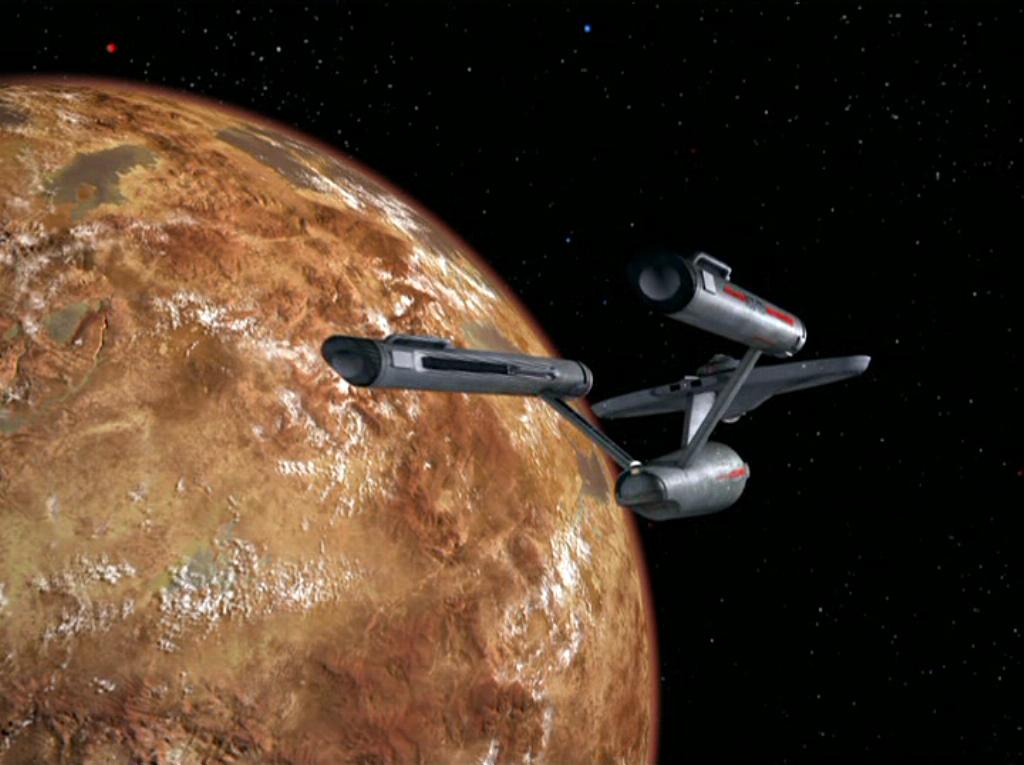
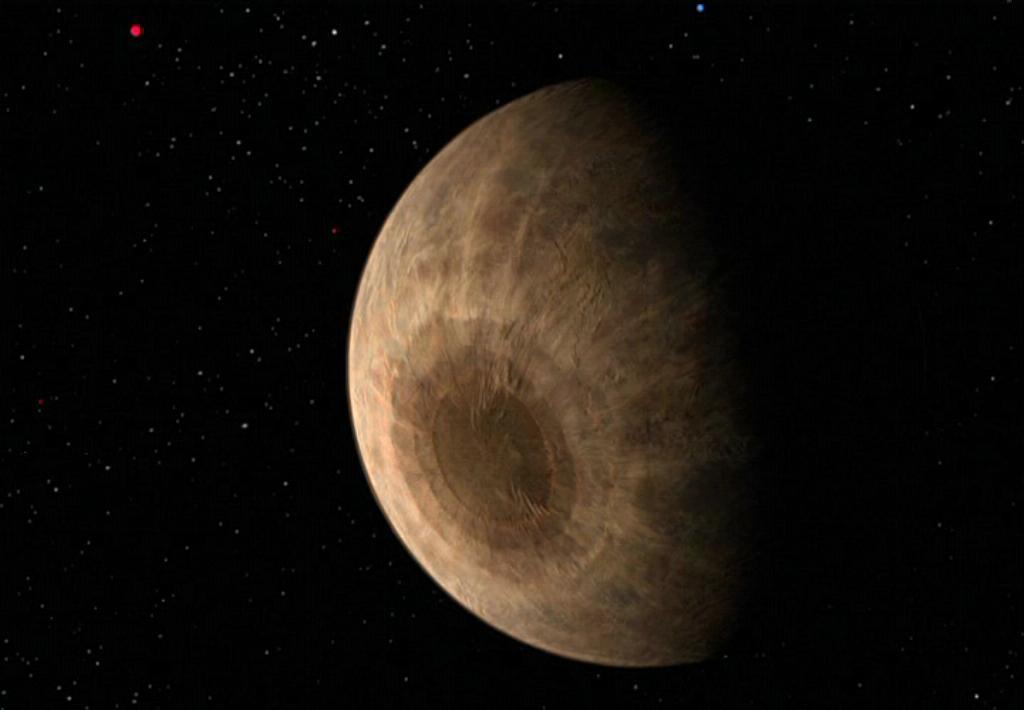
That's planet Tycho IV, before and after Enterprise hit it with one antimatter bomb. The planet was stated to be "class-M", which would make it near-Earth sized: far in excess of what the NX was able to do. In fact, it's in excess of what the Death Star can do with a single reactor ignition as we see in Rogue One: https://www.youtube.com/watch?v=Z79nF8m49FA
By DS9, were seeing feats like this:
https://youtu.be/e6LlLARRJfo?t=157
Klingon Birds of Prey igniting solar plasma ejections with tractor beams, and Cardassian warships being fragmented - not vaporized - by the plasma. We've seen the Enterprise do that one too, in Descent Part II: (Transcript here.)
Code:
(a beam lances out from the belly of the Enterprise) TAITT: The target area of the photosphere is destabilising. Pressure wave expansion is accelerating. BARNABY: Subsurface fusion has been initiated. An eruption is forming on the surface. (the eruption ejects from the sun and destroys the Borg ship) BARNABY: She did it! The Borg ship has been destroyed, sir.- 821
- 47
- Thread starter
- #29
I'd call that an outlier, plain and simple. As I keep saying, we don't rate Superman that high, otherwise Post-Crisis Superman would be 3-A. Or we'd rate Roshi's feat at 5-C because that actually happened on screen. That I can understand why people call it an outlier, to pave the way for scaling later in DBZ. I'd prefer going with the low megatons to low gigatons figure as provided by the tech guides that you discard because you find them inconvenient and babble "non-canon." Isn't the Daizenshuu also non-canon? Just because Toriyama put his stamp of approval on it does not mean it's part of the official continuity, especially given what DBS has introduced into the series. And there are some thing that are part of an official canon fans don't want to be, material like Enterprise and Star Trek V: The Final Frontier, which are too awful to consider real Trek material, but they are canon.
I also feel scandalized you accuse me of downplaying Trek when that neutron star fragment is just one among... many. You hype up trying to blow up the moon threatening Bre'el IV when as I pointed out, it was hardly that big, more like an asteroid, and that it would take more than one shot, which is also consistent with what was shown in "The Pegasus" and other showings like when their weapons hit a Trabe ship, and the surrounding city isn't leveled, or the Borg's weapons are more akin to mortars. Or how about in "Dragon's Teeth" where an alien species 1,000 years ago, with tech comparable to Voyager given that they fought them, were raining death down upon a city, and blasting through skyscrapers, devastating the city, and yet they didn't blow up the planet? Why didn't they have that possibility? Are you trying to claim Voyager is not as powerful as the Enterprise-D? Because it's a far more advanced ship, so... that logic crumbles. Hell, with your own logic, it took the attack of Species 8472 ships, who could planet bust, who were shown to do so on screen, and they don't have a multitude of other inconsistent low-ends vs. high-ends, so I take that at face value, yet... it's not more advanced than the D? How do you believe this stuff? The actual number of planetary feats for ships in Trek are very minor compared to the numerous other low showings. Hell, the fact planets can have exotic materials like it was shown in "Think Tank" on Voyager suggests those materials could be blown up in a chain reaction, as I have repeatedly kept saying. Perhaps the planet the soliton wave was going to hit had such materials within it?
You know, I hadn't watched "The Masterpiece Society" before, so I checked out the transcript. Here's what I've learned.
GEORDI: We can move a small moon or an asteroid, but a stellar core fragment?
Geordi confirms their regular technology base, without improvisation, can only move a small moon or an asteroid, like the kind over Bre'el IV and in "The Pegasus." It was alien theories that made it possible. This suggests more hax given they use terms like "multiphase" than actually talk about raw power. Trek ships always seemed more haxed than extremely powerful.
Saw your new post. OMG... you call me a Trek downplayer? I call you Trek wankers! You're bringing up Archer's Enterprise blasting a mountain off a moon to claim that's a planet level feat?! It's a MOUNTAIN LEVEL FEAT!
I didn't see that episode, but you gotta accept that Kirk's era was somehow much stronger and faster than the TNG era. They could travel to the center of the galaxy in... only a few hours. While it took Voyager seven years to get home even with the assistance of alien technology and higher-dimensional beings. Don't bring up the feats from Kirk's Enterprise, please. How about I limit myself to that rule, too? Let's only discuss the TNG era, because they seemed weaker. I mean, how do you not see that it's inconsistent that they had inferior speed a century later, even though Geordi compliments the Jenolan's design and insists that not much has changed?
Hell, I hate bringing Quarren from "Living Witness" into this because you're going to tell me that he got history wrong, but... whatever. He stated that a photon torpedo warhead carried 25 isotons and could destroy a city. Do you think he'd have mentioned it if it could destroy a planet? And keep in mind, Voyager was built during increasing tensions within the Federation, while the Enterprise-D was built in the era of peace after the Khitomer Accords and the Romulans had withdrawn, so they built it to be more like an exploration vessel than a military ship. Sure, it could defend itself, but there was less emphasis on aggressive capabilities, like there was in the 1990s after the Cold War. Not to mention we hear of biogenic weapons all the time in Star Trek. They could supposedly wipe out civilizations by infecting whole planetary populations. Why do you think no one ever in the history of TNG and DS9 and even Voyager ever talked about the horror of ships that could blow up planets? Why did the Maquis use biogenic weapons and not actually blow up Cardassian planets? Oh I can already hear your argument a mile off, "because they wanted to settle the planets!" I maintain that they would have blown up Cardassia Prime instead, given that would send a far stronger message that the Maquis were serious about wanting to kill them and declare themselves an independent state. They called themselves terrorists and were perfectly willing to murder unarmed and helpless civilians if it suited their goals, as Eddington showed when he crippled a transport to take Sisko off his trail.
They caused a chain reaction in the sun to make it send out a shock wave. That's ALL. You're claiming they used their power to make it explode. Again, that's more hax via technobabble than destructive potential. It's not equivalent to "the neutron star feat" at all when they're sending particles to cause a chain reaction. Let me guess. You're going to deny it was causing chain reactions in the star to make it explode? It wasn't even make it explode! To do that, you need protomatter or trilithium. They just made a shock wave erupt in certain parts of it. That's it. That's all she wrote. I also remember that episode. They needed metaphasic shields (technology invented by the Ferengi) to survive so close to a sun. So their shields can't tolerate being so close to a sun otherwise, as seen in "Relics." Oh, and before you bring it up, Kurn's ship used their exhaust to shoot up a shock wave to take out the other birds of prey pursuing them. It was not raw destructive powere, AGAIN. So stop trying to push them to damn near star level.
And I could bring up even more too, but I'll stop here for now. All you'll do, however, is just insist "he's using debunked arguments," "grasping at straws" INSTEAD OF ADDRESSING MY ARGUMENTS. Bah. And then I get called a Trek downplayer. STOP TREATING ME AS IF I'M AN IDIOT WHO IS UNFAMILIAR WITH THE FRANCHISE.
I also feel scandalized you accuse me of downplaying Trek when that neutron star fragment is just one among... many. You hype up trying to blow up the moon threatening Bre'el IV when as I pointed out, it was hardly that big, more like an asteroid, and that it would take more than one shot, which is also consistent with what was shown in "The Pegasus" and other showings like when their weapons hit a Trabe ship, and the surrounding city isn't leveled, or the Borg's weapons are more akin to mortars. Or how about in "Dragon's Teeth" where an alien species 1,000 years ago, with tech comparable to Voyager given that they fought them, were raining death down upon a city, and blasting through skyscrapers, devastating the city, and yet they didn't blow up the planet? Why didn't they have that possibility? Are you trying to claim Voyager is not as powerful as the Enterprise-D? Because it's a far more advanced ship, so... that logic crumbles. Hell, with your own logic, it took the attack of Species 8472 ships, who could planet bust, who were shown to do so on screen, and they don't have a multitude of other inconsistent low-ends vs. high-ends, so I take that at face value, yet... it's not more advanced than the D? How do you believe this stuff? The actual number of planetary feats for ships in Trek are very minor compared to the numerous other low showings. Hell, the fact planets can have exotic materials like it was shown in "Think Tank" on Voyager suggests those materials could be blown up in a chain reaction, as I have repeatedly kept saying. Perhaps the planet the soliton wave was going to hit had such materials within it?
You know, I hadn't watched "The Masterpiece Society" before, so I checked out the transcript. Here's what I've learned.
GEORDI: We can move a small moon or an asteroid, but a stellar core fragment?
Geordi confirms their regular technology base, without improvisation, can only move a small moon or an asteroid, like the kind over Bre'el IV and in "The Pegasus." It was alien theories that made it possible. This suggests more hax given they use terms like "multiphase" than actually talk about raw power. Trek ships always seemed more haxed than extremely powerful.
Saw your new post. OMG... you call me a Trek downplayer? I call you Trek wankers! You're bringing up Archer's Enterprise blasting a mountain off a moon to claim that's a planet level feat?! It's a MOUNTAIN LEVEL FEAT!
I didn't see that episode, but you gotta accept that Kirk's era was somehow much stronger and faster than the TNG era. They could travel to the center of the galaxy in... only a few hours. While it took Voyager seven years to get home even with the assistance of alien technology and higher-dimensional beings. Don't bring up the feats from Kirk's Enterprise, please. How about I limit myself to that rule, too? Let's only discuss the TNG era, because they seemed weaker. I mean, how do you not see that it's inconsistent that they had inferior speed a century later, even though Geordi compliments the Jenolan's design and insists that not much has changed?
Hell, I hate bringing Quarren from "Living Witness" into this because you're going to tell me that he got history wrong, but... whatever. He stated that a photon torpedo warhead carried 25 isotons and could destroy a city. Do you think he'd have mentioned it if it could destroy a planet? And keep in mind, Voyager was built during increasing tensions within the Federation, while the Enterprise-D was built in the era of peace after the Khitomer Accords and the Romulans had withdrawn, so they built it to be more like an exploration vessel than a military ship. Sure, it could defend itself, but there was less emphasis on aggressive capabilities, like there was in the 1990s after the Cold War. Not to mention we hear of biogenic weapons all the time in Star Trek. They could supposedly wipe out civilizations by infecting whole planetary populations. Why do you think no one ever in the history of TNG and DS9 and even Voyager ever talked about the horror of ships that could blow up planets? Why did the Maquis use biogenic weapons and not actually blow up Cardassian planets? Oh I can already hear your argument a mile off, "because they wanted to settle the planets!" I maintain that they would have blown up Cardassia Prime instead, given that would send a far stronger message that the Maquis were serious about wanting to kill them and declare themselves an independent state. They called themselves terrorists and were perfectly willing to murder unarmed and helpless civilians if it suited their goals, as Eddington showed when he crippled a transport to take Sisko off his trail.
They caused a chain reaction in the sun to make it send out a shock wave. That's ALL. You're claiming they used their power to make it explode. Again, that's more hax via technobabble than destructive potential. It's not equivalent to "the neutron star feat" at all when they're sending particles to cause a chain reaction. Let me guess. You're going to deny it was causing chain reactions in the star to make it explode? It wasn't even make it explode! To do that, you need protomatter or trilithium. They just made a shock wave erupt in certain parts of it. That's it. That's all she wrote. I also remember that episode. They needed metaphasic shields (technology invented by the Ferengi) to survive so close to a sun. So their shields can't tolerate being so close to a sun otherwise, as seen in "Relics." Oh, and before you bring it up, Kurn's ship used their exhaust to shoot up a shock wave to take out the other birds of prey pursuing them. It was not raw destructive powere, AGAIN. So stop trying to push them to damn near star level.
And I could bring up even more too, but I'll stop here for now. All you'll do, however, is just insist "he's using debunked arguments," "grasping at straws" INSTEAD OF ADDRESSING MY ARGUMENTS. Bah. And then I get called a Trek downplayer. STOP TREATING ME AS IF I'M AN IDIOT WHO IS UNFAMILIAR WITH THE FRANCHISE.
- 22,461
- 18,681
I'm not going to cover the rest, since it's far too long.
Again, Bre'el IV's moon isn't small. That was one scene that showed it to be small, and even that could be a small part of the uneven asteroid. All other projections, visuals, and statements have it as being an actual moon-sized object with its own gravitational pull. You're blatantly disregarding this point that I've brought up a multitude of times. It's also quite possible it was just one given that Riker was very casual about it and thousands of fragments is still massive.
^ speaking on this, shouldn't Photon torpedoes on a higher setting be comparable to their phasers?
I was saying you were grasping at straws for the Star Wars argument, where you compared two verses of different power to say stuff like "do you believe the enterprise could destroy the Death Star?" I was also saying you were using debunked arguments for the afformentioned Star Wars argument, the soliton wave being about frequency, and the moon of Bre'el IV.
Now, I mentioned this before, but the Enterprise has been through massive upgrades and overhauls that's far higher than the previous one. They even believed their modifications could allow them to defeat a Borg cube, despite them having curbstomped them in Q Who. They did lose, however.
Again, Bre'el IV's moon isn't small. That was one scene that showed it to be small, and even that could be a small part of the uneven asteroid. All other projections, visuals, and statements have it as being an actual moon-sized object with its own gravitational pull. You're blatantly disregarding this point that I've brought up a multitude of times. It's also quite possible it was just one given that Riker was very casual about it and thousands of fragments is still massive.
^ speaking on this, shouldn't Photon torpedoes on a higher setting be comparable to their phasers?
I was saying you were grasping at straws for the Star Wars argument, where you compared two verses of different power to say stuff like "do you believe the enterprise could destroy the Death Star?" I was also saying you were using debunked arguments for the afformentioned Star Wars argument, the soliton wave being about frequency, and the moon of Bre'el IV.
Now, I mentioned this before, but the Enterprise has been through massive upgrades and overhauls that's far higher than the previous one. They even believed their modifications could allow them to defeat a Borg cube, despite them having curbstomped them in Q Who. They did lose, however.
- 384
- 119
He also referred back to Voyager, even though we both corrected him on Voyager's documented continuity issues. He's ignoring the contexts given in the scripts, explanations from both of us, and hastily rummaging for justifications to ignore any of Star Trek's canonical feats that somehow make him uncomfortable. The problem here is clear: his proposal isn't about Star Trek. It's about Star Wars. More specifically, reducing Star Trek to a level that Star Wars can exceed, regardless of feats.ByAsura said:You're blatantly disregarding this point that I've brought up a multitude of times. (...) I was saying you were grasping at straws for the Star Wars argument, where you compared two verses of different power to say stuff like "do you believe the enterprise could destroy the Death Star?" I was also saying you were using debunked arguments for the afformentioned Star Wars argument, the soliton wave being about frequency, and the moon of Bre'el IV. (...)
- 384
- 119
1. "too awful" is subjective. 2. Both of those sources have been brought up already. 3. The feats that you hate so much are canon.Yukaphile said:(...) And there are some thing that are part of an official canon fans don't want to be, material like Enterprise and Star Trek V: The Final Frontier, which are too awful to consider real Trek material, but they are canon.
I'm not a person to make any kind of accusation lightly. Your argument essentially boils down to "you should falsify and ignore all of Star Trek's planetary feats because I like Star Wars more". You points have been logically addressed already:Yukaphile said:(...) I also feel scandalized you accuse me of downplaying Trek when that neutron star fragment is just one among... many. (...)
Adjustable yields: Starfleet wouldn't destroy cities or planets without reason, and - as I already explained - the Borg were making a distraction, and had a vested interest in NOT destroying their "target".Yukaphile said:when their weapons hit a Trabe ship, and the surrounding city isn't leveled, or the Borg's weapons are more akin to mortars. (...) The actual number of planetary feats for ships in Trek are very minor compared to the numerous other low showings.
http://web.archive.org/web/20151224...pmwiki/pmwiki.php/WallBangers/StarTrekVoyager <- Say what you may about fans deciding on their own that something is "too awful" to be canon, Voyager is objectively bad as a canon resource, even unto itself. That's why there's eight folders of notable (and often incredible) logical contradictions Voyager made. One of those folders is devoted to a single episode instead of an entire season like the others.Yukaphile said:(...) Are you trying to claim Voyager is not as powerful as the Enterprise-D? Because it's a far more advanced ship, so... that logic crumbles.
Most of the episodes you mentioned in your post are from Voyager: Dragon's Teeth, Living Witness, Think Tank...
We both know that's not how that went pal. The content of my post is entirely visible above and can be compared against your claims.Yukaphile said:Saw your new post. OMG... you call me a Trek downplayer? I call you Trek wankers! You're bringing up Archer's Enterprise blasting a mountain off a moon to claim that's a planet level feat?! It's a MOUNTAIN LEVEL FEAT!
1. Kirk's Enterprise is canon. 2. I already explained the speed discrepancy. 3. Voyager would have been home at Kirk speeds if not for bad writing: http://web.archive.org/web/20151224...pmwiki/pmwiki.php/WallBangers/StarTrekVoyagerYukaphile said:I didn't see that episode, but you gotta accept that Kirk's era was somehow much stronger and faster than the TNG era. They could travel to the center of the galaxy in... only a few hours. While it took Voyager seven years to get home even with the assistance of alien technology and higher-dimensional beings. Don't bring up the feats from Kirk's Enterprise, please.
You brought this up already: you are ignoring that Geordi specified that the Jenolan was faster than Enterprise-D at impulse, not Warp Speed. I explained this already, too. (At this rate, I's fully expect you to claim that he's saying the Jenolan could outrun the Enterprise-D's full warp speed with only it's impulse drive. No, that's not what he's saying.)Yukaphile said:I mean, how do you not see that it's inconsistent that they had inferior speed a century later, even though Geordi compliments the Jenolan's design and insists that not much has changed?
<sarcasm> Yes, because the Maquis - a small group of terrorists - had free and unrestricted access to upgraded Galaxy Class starships and various other planet-killer technologies, and the Cardassian homeworld - capital of a highly militant dictatorship - is totally defenseless and easily accessible. <sarcasm>Yukaphile said:Why did the Maquis use biogenic weapons and not actually blow up Cardassian planets? Oh I can already hear your argument a mile off, "because they wanted to settle the planets!" I maintain that they would have blown up Cardassia Prime instead
You're not even trying to make a rational argument.
You're the one denying that any energy transfer was needed to generate the wave, as if they did the feats by telekinesis or something. And I also said that the star feats don't affect the AP because they are making the star react, not casually blasting the star away. It stands to reason that they couldn't do what they do with no energy at all. It certainly takes more energy than a few city-busting nukes could output.Yukaphile said:They caused a chain reaction in the sun to make it send out a shock wave. That's ALL. You're claiming they used their power to make it explode. (...) Oh, and before you bring it up, Kurn's ship used their exhaust to shoot up a shock wave to take out the other birds of prey pursuing them. It was not raw destructive powere, AGAIN. So stop trying to push them to damn near star level.
The problem being that your arguments have already been addressed and debunked. Every single argument you made was one that had been addressed earlier.Yukaphile said:And I could bring up even more too, but I'll stop here for now. All you'll do, however, is just insist "he's using debunked arguments," "grasping at straws" INSTEAD OF ADDRESSING MY ARGUMENTS. Bah. And then I get called a Trek downplayer. STOP TREATING ME AS IF I'M AN IDIOT WHO IS UNFAMILIAR WITH THE FRANCHISE.
- 22,461
- 18,681
I took a look at some stuff, and in the series they actually show in True Q that the USS Enterprise NCC-1701-D produces 12.75 billion gigawatts, or 1.27500e19 Joules per second while in orbit alone, which is very nearly Island level. That far surpasses other in-verse projections of Building level to City level, including the 400 Gigawatt (Multi-City Block level) value.
- 821
- 47
- Thread starter
- #34
Going to try and be way more professionally here, now, because passion won't win arguments.
@ByAsura We can see the Enterprise right next to the moon, and we can see the moon doesn't extend past the horizon. It's nowhere near the size of our moon. I'd peg it closer to the size of the Argus Array. Same with the asteroid in "The Pegasus." That is consistent with Geordi's statement they can move "small moons and asteroids."
RIKER: Could we blow it into pieces?
Riker's comment implies it would take more than one shot, similar to how he said it would take their whole torpedo spread to blow up the asteroid in "The Pegasus."
RIKER: I recommend we destroy the asteroid. It would take most of our photon torpedoes, but it would preclude any possibility of the Pegasus falling into Romulan hands.
They only carried 250 photon torpedoes, which carried 25 isotons, but then, we don't know what an isoton even is, just that it could "destroy a city." But that's consistent with these two claims.
QUARREN: Please, feel free to test the simulators. I wouldn't touch that if I were you. One of the Voyager's torpedoes. Twenty five isoton yield. It could destroy an entire city within seconds. It's been inactive for centuries but you never know. I'm only teasing, but please be careful. If we damage any of these relics they can never be replaced. The history of our people should be respected.
Reference to where they believed they could beat a Borg cube? I can't recall that. Give me a source, I'll look it up.
https://memory-alpha.wikia.com/wiki/Argus_Array
As you can see, even claiming it's the size of the Argus Array is being generous, given how huge this structure is, and how small the Enterprise is compared to it, at least from on screen visuals. The Enterprise-D has a given length of 700 meters. Again, this would put it at no more than the size of Manhattan, or perhaps 20 kilometers at BEST. I've already proven the reason it would take six hours to search through the asteroid was because of "ionizing" radiation present in the system. Radiation interferes with sensors, see, and disrupts transports too.
@Idazmi Look who's talking. You can't disregard Voyager because it's inconvenient. You disregard the tech guides because they're inconvenient too. Voyager was a ship of comparable technology, and set in the same era, unlike Enterprise or TOS or any of the multitude of movies. That means we can debate with it.
1. Do you think Enterprise and Discovery are good shows? Because most Trek fans hate them, and I do too. Voyager is passable at best. 2. Okay, I'm finally countering these claims. 2.1 The claim that the Borg were stalling for time to beam onto the Enterprise-E is pure headcanon. We don't see them on the cube or on the sphere during the attack, when it was blown up, or after they traveled through time. Anything else is speculation, or non-canon supplementary material. 2.2 They had a stated theoretical maximum of sixteen adjustable levels, from the TNG episode "New Ground," though to say they could go higher was never proven. You might think Level 16 is the one needed to deal with planet-busting attacks, but there's a problem in that again, the soliton wave was to be directed towards a colony that would send out the return signal which would dissipate the wave harmlessly, but it had grown in such power by the time it would hit that it would take out most of the planet, though again, as we see in Voyager, and even in TNG, there are many elements and minerals and chemicals and exotic materials that can make a planet unstable and prone to chain reactions. Take a look at the Season 2 Episode "Pen Pals" where it's said the dilithium was going to cause a massive geological calamity. This is actually consistent with Voyager, yeah. Or Wrath of Khan, where Khan himself said Ceti Alpha VI just blew up one day without warning. And again, these torpedoes were also said to be capable of generating 25 isotons, but then, no one knows what an isoton even is. Again, the evidence so far with A) The Bre'el IV moon and B) The asteroid in "The Pegasus" seems to point to the fact that it would take near to 250 photon torpedoes to destroy a small moon-sized object of perhaps a few or several dozen kilometers. That's consistent with other claims and sources I've made so far. 3. I'm not disputing their status to canon. Simply that it's the same reason DC and Marvel need careful and cautious editing when scaling, because it's written by a team of numerous different people all with different ideas. The same thing applies to Trek. I've said that over and over and over.
It's true I'm not presenting as strong of a case as I could, so I've decided to rectify that, to hell with everything else, and go full-bore hard-in in presenting my arguments well. Because believe it or not, I AM a huge Trek fan. I've seen numerous episodes of TOS, TNG, and practically every episode of DS9 and most of the movies prior to Nemesis. I wanna represent my fandom better.
Okay, adjustable yields. But on screen visuals don't present it as being anything particularly powerful, even compared to ships attacking other ships in the past. Hell, while we're on the subject, on screen visuals show contradictory statements. They always claim space battles are being fought hundreds of thousands of kilometers distant, yet on screen showings have them slugging it out up close. How do we reconcile this? Because, I mean, if that can be faulty, what else can be faulty? I can think of two examples, where Voyager was being chased by aliens in "The Swarm," and yet it was shown visually to be very close to them, or during Operation Return in which we see them up close within meters of one another and not hundreds of thousands of kilometers apart, as per the norm in Trek.
Voyager is still canon. Deal with it. And it's ironic you're not using it given how Voyager actually took a blast from a Species 8472 bioship, and nine of those could blow up a planet. Voyager was just a slight exaggeration to the many continuity errors Trek had, just in far larger numbers. Even DS9 had them, and that was a very tight, very serialized show. So can we please limit our discussion to TNG, DS9, Voyager, and the TNG era movies?
Moving on.
OMG, where do I begin... your speed discrepancy explanation is just... full of holes. For one thing, "Force of Nature" was late Season 7, and meant to pave the way for Voyager, to explain why they weren't going so far? Hey, weren't you just arguing how inconsistent Voyager was? But more than that, there's a Season 4 episode called "The Nth Degree" where they crossed 30,000 light-years in minutes, right into the galactic core, and Picard was amazed by it. Then there's the episode "Q Who" where they were thrown 7,000 light-years away, and here's the actual numbers given for how long it would take to get back to known space.
DATA [OC]: At maximum warp, in two years, seven months, three days, eighteen hours we would reach Starbase one eight five.
Two years to cross 7,000 light-years. Long before "Force of Nature." But wait, there's more! There's also "The Ensigns of Command," where they came upon a small colony of humans that was being threatened by the Sheliak Corporate. Picard needed to evacuate 15,000 people and sent in a request to Starfleet.
PICARD: Three weeks. Starfleet is profuse in their apologies, but it will still be three weeks until the arrival of a colony transport ship equipped with dedicated personnel shuttles.
Now true, the location was never given, but I don't see that as being any further beyond the Alpha Quadrant, as DS9 shows. But wait, there's more! If they really could cross the galaxy in only 47 days, and the cube which they encountered was over 7,000 light-years away (not even including Voyager here, mind you), then why would it take them six days to mobilize a fleet of starships near Wolf 359? Wolf 359 is a REAL system, very close to Earth, only 7.795 light-years from Earth. Here.
https://www.google.com/search?q=how...3.69i57j0l5.4047j1j7&sourceid=chrome&ie=UTF-8
Meanwhile, we get tons and tons of references to Kirk's enterprise being able to cross the galaxy. And taking on the Doomsday Machine. And doing all kinda other crazy stuff as you've shown. You're just going to have to accept it was a different era and that the ships in Kirk's time were somehow faster and stronger, and this was a retcon. Hell, there's even inconsistency in TNG! Kivas Fajo talks about "our own personal exploration of the galaxy," but later in the episode, it's revealed he hasn't traveled very far at low warp.
WESLEY: The Jovis has a maximum speed of warp three. He's had twenty three hours so we can define a perimeter of point one oh two light years as his possible distance.
RIKER: Fajo doesn't know that we're onto him, so he probably isn't taxing his engines at top speed.
WESLEY: He could have made it to the Nel Bato system, or maybe even the Giles Belt.
PICARD: He's a trader. He doesn't attract customers by being hard to find.
RIKER: We could put out a coded level two query to all Federation outposts within the perimeter.
PICARD: Make it so.
And need I remind you, the Enterprise has warp 3, and "The Most Toys" was from Season 3. I mean, how is this hard for you to get given that Voyager apparently built a shuttle that reaches infinite speed and literally achieves omnipresence, and that ten years before Kirk's era, there's an engine powered by magic mushrooms that lets you cross the universe? Or something, I don't watch Discovery much because... it's terrible, period. This is what I mean by inconsistent writing, and how Kirk's era was much simpler, and faster and stronger. To date, we have never seen the Enterprise-D once replicate the "punch a planet with a phaser feat," which is still continental, and not flat-out Death Star blasts Alderaan. The closest would be the Romulan/Cardassian fleet, and again, Romulan Warbirds regularly duel the Enterprise-D, in DS9 which attacked the Founders' homeworld, and were confident they could perform country or continent-level attacks in order to shred away the mantle down to the core within five hours.
I will concede this point here. Though he also admitted the designs hadn't changed that much, such as the transporters, subspace radio, and sensors.
How about now? Why didn't they lead a raid to try and steal the Enterprise-D? They had at least thousands of members they could have used to try to do so, and it's not as if their tech is that far below other Federation base, given they WERE Federation citizens. We see in DS9 that through the element of surprise the Maquis are able to compete with Excelsior-class ships and even the Defiant, and even though those ships do hold the edge and always win, there was that time they ambushed the Malinche... the answer is, of course, if the Enterprise HAD been upgraded to become a mobile fleet that could destroy a planet with one shot, down to nothingness, then every other power in the quadrant would be trying to seize it for themselves, especially given even near the end of TNG, that other ships went toe-to-toe with them and held their own for a while. Doesn't that tell you something? And we also see in Voyager through Jonas's interactions with the Kazon with the Cardassian Dreadnought that if such a powerful weapon really existed, then other groups would become interested in it.
Really, yeah. They can manipulate a sun if they're close to make it send a shock wave that will hurt another ship or a whole fleet yard. That's through applied science and particle weapons, though. Doesn't make them actually star busters.
@ByAsura Here's a lost of all the watts shown throughout Trek's run.
https://memory-alpha.wikia.com/wiki/Watt
Look at how inconsistent that is.
@ByAsura We can see the Enterprise right next to the moon, and we can see the moon doesn't extend past the horizon. It's nowhere near the size of our moon. I'd peg it closer to the size of the Argus Array. Same with the asteroid in "The Pegasus." That is consistent with Geordi's statement they can move "small moons and asteroids."
RIKER: Could we blow it into pieces?
Riker's comment implies it would take more than one shot, similar to how he said it would take their whole torpedo spread to blow up the asteroid in "The Pegasus."
RIKER: I recommend we destroy the asteroid. It would take most of our photon torpedoes, but it would preclude any possibility of the Pegasus falling into Romulan hands.
They only carried 250 photon torpedoes, which carried 25 isotons, but then, we don't know what an isoton even is, just that it could "destroy a city." But that's consistent with these two claims.
QUARREN: Please, feel free to test the simulators. I wouldn't touch that if I were you. One of the Voyager's torpedoes. Twenty five isoton yield. It could destroy an entire city within seconds. It's been inactive for centuries but you never know. I'm only teasing, but please be careful. If we damage any of these relics they can never be replaced. The history of our people should be respected.
Reference to where they believed they could beat a Borg cube? I can't recall that. Give me a source, I'll look it up.
https://memory-alpha.wikia.com/wiki/Argus_Array
As you can see, even claiming it's the size of the Argus Array is being generous, given how huge this structure is, and how small the Enterprise is compared to it, at least from on screen visuals. The Enterprise-D has a given length of 700 meters. Again, this would put it at no more than the size of Manhattan, or perhaps 20 kilometers at BEST. I've already proven the reason it would take six hours to search through the asteroid was because of "ionizing" radiation present in the system. Radiation interferes with sensors, see, and disrupts transports too.
@Idazmi Look who's talking. You can't disregard Voyager because it's inconvenient. You disregard the tech guides because they're inconvenient too. Voyager was a ship of comparable technology, and set in the same era, unlike Enterprise or TOS or any of the multitude of movies. That means we can debate with it.
1. Do you think Enterprise and Discovery are good shows? Because most Trek fans hate them, and I do too. Voyager is passable at best. 2. Okay, I'm finally countering these claims. 2.1 The claim that the Borg were stalling for time to beam onto the Enterprise-E is pure headcanon. We don't see them on the cube or on the sphere during the attack, when it was blown up, or after they traveled through time. Anything else is speculation, or non-canon supplementary material. 2.2 They had a stated theoretical maximum of sixteen adjustable levels, from the TNG episode "New Ground," though to say they could go higher was never proven. You might think Level 16 is the one needed to deal with planet-busting attacks, but there's a problem in that again, the soliton wave was to be directed towards a colony that would send out the return signal which would dissipate the wave harmlessly, but it had grown in such power by the time it would hit that it would take out most of the planet, though again, as we see in Voyager, and even in TNG, there are many elements and minerals and chemicals and exotic materials that can make a planet unstable and prone to chain reactions. Take a look at the Season 2 Episode "Pen Pals" where it's said the dilithium was going to cause a massive geological calamity. This is actually consistent with Voyager, yeah. Or Wrath of Khan, where Khan himself said Ceti Alpha VI just blew up one day without warning. And again, these torpedoes were also said to be capable of generating 25 isotons, but then, no one knows what an isoton even is. Again, the evidence so far with A) The Bre'el IV moon and B) The asteroid in "The Pegasus" seems to point to the fact that it would take near to 250 photon torpedoes to destroy a small moon-sized object of perhaps a few or several dozen kilometers. That's consistent with other claims and sources I've made so far. 3. I'm not disputing their status to canon. Simply that it's the same reason DC and Marvel need careful and cautious editing when scaling, because it's written by a team of numerous different people all with different ideas. The same thing applies to Trek. I've said that over and over and over.
It's true I'm not presenting as strong of a case as I could, so I've decided to rectify that, to hell with everything else, and go full-bore hard-in in presenting my arguments well. Because believe it or not, I AM a huge Trek fan. I've seen numerous episodes of TOS, TNG, and practically every episode of DS9 and most of the movies prior to Nemesis. I wanna represent my fandom better.
Okay, adjustable yields. But on screen visuals don't present it as being anything particularly powerful, even compared to ships attacking other ships in the past. Hell, while we're on the subject, on screen visuals show contradictory statements. They always claim space battles are being fought hundreds of thousands of kilometers distant, yet on screen showings have them slugging it out up close. How do we reconcile this? Because, I mean, if that can be faulty, what else can be faulty? I can think of two examples, where Voyager was being chased by aliens in "The Swarm," and yet it was shown visually to be very close to them, or during Operation Return in which we see them up close within meters of one another and not hundreds of thousands of kilometers apart, as per the norm in Trek.
Voyager is still canon. Deal with it. And it's ironic you're not using it given how Voyager actually took a blast from a Species 8472 bioship, and nine of those could blow up a planet. Voyager was just a slight exaggeration to the many continuity errors Trek had, just in far larger numbers. Even DS9 had them, and that was a very tight, very serialized show. So can we please limit our discussion to TNG, DS9, Voyager, and the TNG era movies?
Moving on.
OMG, where do I begin... your speed discrepancy explanation is just... full of holes. For one thing, "Force of Nature" was late Season 7, and meant to pave the way for Voyager, to explain why they weren't going so far? Hey, weren't you just arguing how inconsistent Voyager was? But more than that, there's a Season 4 episode called "The Nth Degree" where they crossed 30,000 light-years in minutes, right into the galactic core, and Picard was amazed by it. Then there's the episode "Q Who" where they were thrown 7,000 light-years away, and here's the actual numbers given for how long it would take to get back to known space.
DATA [OC]: At maximum warp, in two years, seven months, three days, eighteen hours we would reach Starbase one eight five.
Two years to cross 7,000 light-years. Long before "Force of Nature." But wait, there's more! There's also "The Ensigns of Command," where they came upon a small colony of humans that was being threatened by the Sheliak Corporate. Picard needed to evacuate 15,000 people and sent in a request to Starfleet.
PICARD: Three weeks. Starfleet is profuse in their apologies, but it will still be three weeks until the arrival of a colony transport ship equipped with dedicated personnel shuttles.
Now true, the location was never given, but I don't see that as being any further beyond the Alpha Quadrant, as DS9 shows. But wait, there's more! If they really could cross the galaxy in only 47 days, and the cube which they encountered was over 7,000 light-years away (not even including Voyager here, mind you), then why would it take them six days to mobilize a fleet of starships near Wolf 359? Wolf 359 is a REAL system, very close to Earth, only 7.795 light-years from Earth. Here.
https://www.google.com/search?q=how...3.69i57j0l5.4047j1j7&sourceid=chrome&ie=UTF-8
Meanwhile, we get tons and tons of references to Kirk's enterprise being able to cross the galaxy. And taking on the Doomsday Machine. And doing all kinda other crazy stuff as you've shown. You're just going to have to accept it was a different era and that the ships in Kirk's time were somehow faster and stronger, and this was a retcon. Hell, there's even inconsistency in TNG! Kivas Fajo talks about "our own personal exploration of the galaxy," but later in the episode, it's revealed he hasn't traveled very far at low warp.
WESLEY: The Jovis has a maximum speed of warp three. He's had twenty three hours so we can define a perimeter of point one oh two light years as his possible distance.
RIKER: Fajo doesn't know that we're onto him, so he probably isn't taxing his engines at top speed.
WESLEY: He could have made it to the Nel Bato system, or maybe even the Giles Belt.
PICARD: He's a trader. He doesn't attract customers by being hard to find.
RIKER: We could put out a coded level two query to all Federation outposts within the perimeter.
PICARD: Make it so.
And need I remind you, the Enterprise has warp 3, and "The Most Toys" was from Season 3. I mean, how is this hard for you to get given that Voyager apparently built a shuttle that reaches infinite speed and literally achieves omnipresence, and that ten years before Kirk's era, there's an engine powered by magic mushrooms that lets you cross the universe? Or something, I don't watch Discovery much because... it's terrible, period. This is what I mean by inconsistent writing, and how Kirk's era was much simpler, and faster and stronger. To date, we have never seen the Enterprise-D once replicate the "punch a planet with a phaser feat," which is still continental, and not flat-out Death Star blasts Alderaan. The closest would be the Romulan/Cardassian fleet, and again, Romulan Warbirds regularly duel the Enterprise-D, in DS9 which attacked the Founders' homeworld, and were confident they could perform country or continent-level attacks in order to shred away the mantle down to the core within five hours.
I will concede this point here. Though he also admitted the designs hadn't changed that much, such as the transporters, subspace radio, and sensors.
How about now? Why didn't they lead a raid to try and steal the Enterprise-D? They had at least thousands of members they could have used to try to do so, and it's not as if their tech is that far below other Federation base, given they WERE Federation citizens. We see in DS9 that through the element of surprise the Maquis are able to compete with Excelsior-class ships and even the Defiant, and even though those ships do hold the edge and always win, there was that time they ambushed the Malinche... the answer is, of course, if the Enterprise HAD been upgraded to become a mobile fleet that could destroy a planet with one shot, down to nothingness, then every other power in the quadrant would be trying to seize it for themselves, especially given even near the end of TNG, that other ships went toe-to-toe with them and held their own for a while. Doesn't that tell you something? And we also see in Voyager through Jonas's interactions with the Kazon with the Cardassian Dreadnought that if such a powerful weapon really existed, then other groups would become interested in it.
Really, yeah. They can manipulate a sun if they're close to make it send a shock wave that will hurt another ship or a whole fleet yard. That's through applied science and particle weapons, though. Doesn't make them actually star busters.
@ByAsura Here's a lost of all the watts shown throughout Trek's run.
https://memory-alpha.wikia.com/wiki/Watt
Look at how inconsistent that is.
- 22,461
- 18,681
It being that size is contradicted by two projections, it also has multiple statements about the massive impact crater, seismic reprecussions, landquakes, tsunamis, and atmospheric changes that an asteroid of that calibre couldn't achieve (see here, here, and here). There's also actual tidal effects from the moon being closer. That scene where the moon is tiny is probably due to budget. Star Trek often has scenes where distances of kilometers (even without magnification) look far less than in real life.
Also, most of the pics are actually a matter of perspective, albiet the one above isn't but the distance was stated to be around 600 meters (640 I think), which is relative in size to the ship. Saying it doesn't extend past the horizon is meaningless since it isn't even in frame. Plus, the mass clearly outweighs the size, as Geordi says it's specifically due to the mass and Data is very concerned about the mass remaining the same after destroying it, creating a far larger area of destruction. The moon is also, as I showed in my first comment on this thread, far more durable than normal.
But let's also see how much energy it takes to destroy a moon of the size you suggest (manhattan is 21.6 km). The rough amount using the minimum fragmentation is 201,720,841,000 Tons of TNT, or Large Island level, above the highest end of City level by 2000 times. Using 10 kilometers still gets Island level results.
Saying "Could we blow it to pieces" implies nothing, especially since Q (who's IQ is over 2000 as a human) states that the moon would be torn to pieces with the equivalent of warp 9's power into the tractor beam. So they couldn't blow up an asteroid (one that's at least 2 km in diameter given that's how far the Pegasus was in) that's so unstable that phaser fire could cause caves and caverns to collapse despite being able to level a city? You talk about Planet level or Moon level feats being an outlier, but this is on a whole other level. Also, what kind of destruction, were they planning for the torpedoes to reduce it to thousands of fragments like the moon above, or to pulverize, vaporize, or atomize it?
Also it's not consistent, as that's at normal power, while this feat is at an amped level.
I mispoke, fight is actually what I meant. Although, upon another rewatching, they still didn't believe they could fight it and that it'd take months for new weapons. But the Enterprise did manage to put up a fight, especially since the Borg had gathered their data and adapted.
You totally missed the point. What I was trying to say is that there's also a ton of higher values in addition to the lower ones and that anyone can pick and choose them. That's all. The Watt and energy stuff is inconsistent and B.S.
Sorry if I myself missed a few points or made some mistakes. I'm fairly tired right now.
Also, most of the pics are actually a matter of perspective, albiet the one above isn't but the distance was stated to be around 600 meters (640 I think), which is relative in size to the ship. Saying it doesn't extend past the horizon is meaningless since it isn't even in frame. Plus, the mass clearly outweighs the size, as Geordi says it's specifically due to the mass and Data is very concerned about the mass remaining the same after destroying it, creating a far larger area of destruction. The moon is also, as I showed in my first comment on this thread, far more durable than normal.
But let's also see how much energy it takes to destroy a moon of the size you suggest (manhattan is 21.6 km). The rough amount using the minimum fragmentation is 201,720,841,000 Tons of TNT, or Large Island level, above the highest end of City level by 2000 times. Using 10 kilometers still gets Island level results.
Saying "Could we blow it to pieces" implies nothing, especially since Q (who's IQ is over 2000 as a human) states that the moon would be torn to pieces with the equivalent of warp 9's power into the tractor beam. So they couldn't blow up an asteroid (one that's at least 2 km in diameter given that's how far the Pegasus was in) that's so unstable that phaser fire could cause caves and caverns to collapse despite being able to level a city? You talk about Planet level or Moon level feats being an outlier, but this is on a whole other level. Also, what kind of destruction, were they planning for the torpedoes to reduce it to thousands of fragments like the moon above, or to pulverize, vaporize, or atomize it?
Also it's not consistent, as that's at normal power, while this feat is at an amped level.
I mispoke, fight is actually what I meant. Although, upon another rewatching, they still didn't believe they could fight it and that it'd take months for new weapons. But the Enterprise did manage to put up a fight, especially since the Borg had gathered their data and adapted.
You totally missed the point. What I was trying to say is that there's also a ton of higher values in addition to the lower ones and that anyone can pick and choose them. That's all. The Watt and energy stuff is inconsistent and B.S.
Sorry if I myself missed a few points or made some mistakes. I'm fairly tired right now.
- 821
- 47
- Thread starter
- #40
Ever hear of the Barringer Meteor? That huge crater was thought to be caused by something only 30 to 50 meters.
https://www.lpi.usra.edu/science/kr...enviropages/Barringer/barringerstartpage.html
So naturally, something that's much larger would produce greater effects of devastation. This is also consistent with the asteroidal moon being, say, the size of Phobos, which we consider a moon of Mars. Phobos, btw, is around 27 kilometers. Again, I'd peg this more at mountain level, given that Mt. Everest is at eight kilometers, and that IS the largest mountain in the world. Then again, it could be continental as well. These are all very consistent given that the size of the Enterprise is 700 meters, the asteroid is shown to be something resembling a size close to Phobos in many shots, and as I just showed you, the Barringer Meteor hit with the force of 20 to 40 megatons. So naturally, a 27 or so kilometer rock would cause a greater blast across a wider area. I don't see anything out of whack here, but then, I'm not a math whiz.
https://www.lpi.usra.edu/science/kr...enviropages/Barringer/barringerstartpage.html
So naturally, something that's much larger would produce greater effects of devastation. This is also consistent with the asteroidal moon being, say, the size of Phobos, which we consider a moon of Mars. Phobos, btw, is around 27 kilometers. Again, I'd peg this more at mountain level, given that Mt. Everest is at eight kilometers, and that IS the largest mountain in the world. Then again, it could be continental as well. These are all very consistent given that the size of the Enterprise is 700 meters, the asteroid is shown to be something resembling a size close to Phobos in many shots, and as I just showed you, the Barringer Meteor hit with the force of 20 to 40 megatons. So naturally, a 27 or so kilometer rock would cause a greater blast across a wider area. I don't see anything out of whack here, but then, I'm not a math whiz.
- Status
- Not open for further replies.
Similar threads
- Replies
- 307
- Views
- 11K
- Replies
- 293
- Views
- 16K
- Replies
- 78
- Views
- 8K
